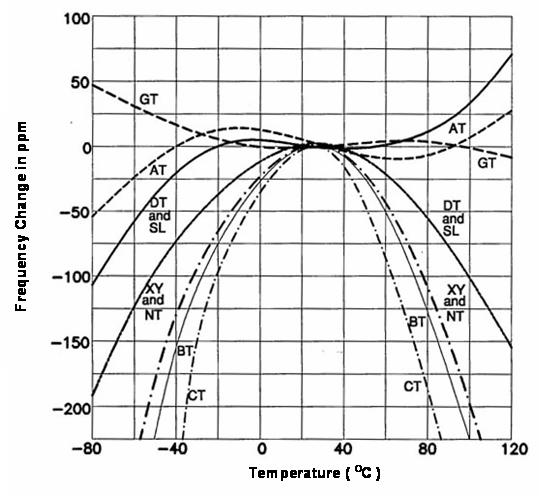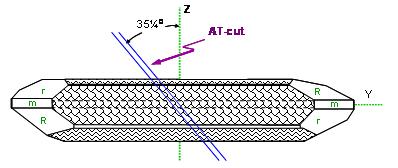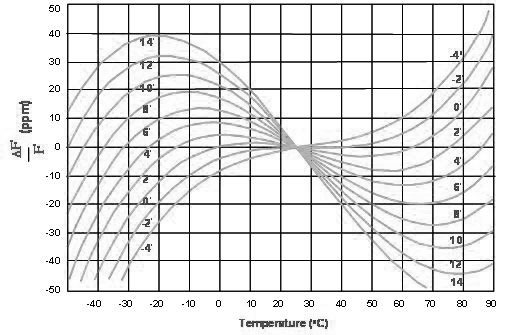Frequency and temperature characteristics of quartz crystals
Most of the quartz crystals are used as reference frequency reference or frequency control components in electronic circuits, so the frequency versus temperature characteristic is an important parameter. In fact, good frequency versus temperature characteristics are one of the main factors in choosing quartz as a frequency component. With proper definition and design, quartz crystal components can easily meet the frequency error range in parts per million (ppm). If LCR components are formed into high-frequency oscillation circuits by discrete circuits, it is possible to achieve the required reference frequency signal error in the ppm or sub-ppm range in small production runs, but this approach cannot meet the mass production scale required by the industry. The frequency-to-temperature characteristics of quartz components are even more difficult to achieve with discrete oscillation lines. In (Figure 4), the frequency-to-temperature characteristic curves are provided for several different quartz crystal cutting angles.

﹝Fig.4﹞Frequency-temperature characteristics of various quartz cuts.
Among the various types of cutting angles, the AT-angle cutting of quartz chips is suitable for the frequency range of several MHz to several hundred MHz, and is one of the more widely used cutting applications for quartz chips. In (Fig. 5), the top view of the quartz bar in the X-axis can be seen in the AT direction with a rotation of about 35 degrees to the Z-axis. This is also a good way of working in mass production technology.

( Fig.5 ) Orientation of AT plat
(Fig. 6) shows the expansion of the frequency versus temperature characteristics of the AT-cut angular variation in the thickness vibration mode. The advantage of the AT cut is that the frequency versus temperature variation is a one-dimensional cubic curve, using the common room temperature of 25 degrees as the relative zero point. This characteristic can be seen in (Figure 6), where the first and second order constants of the AT-cut temperature curve are zero for a wide temperature range, and the third order constant determines the value of the frequency versus temperature variation. .

(Fig. 6) AT - cut frequency-temperature characteristics.









